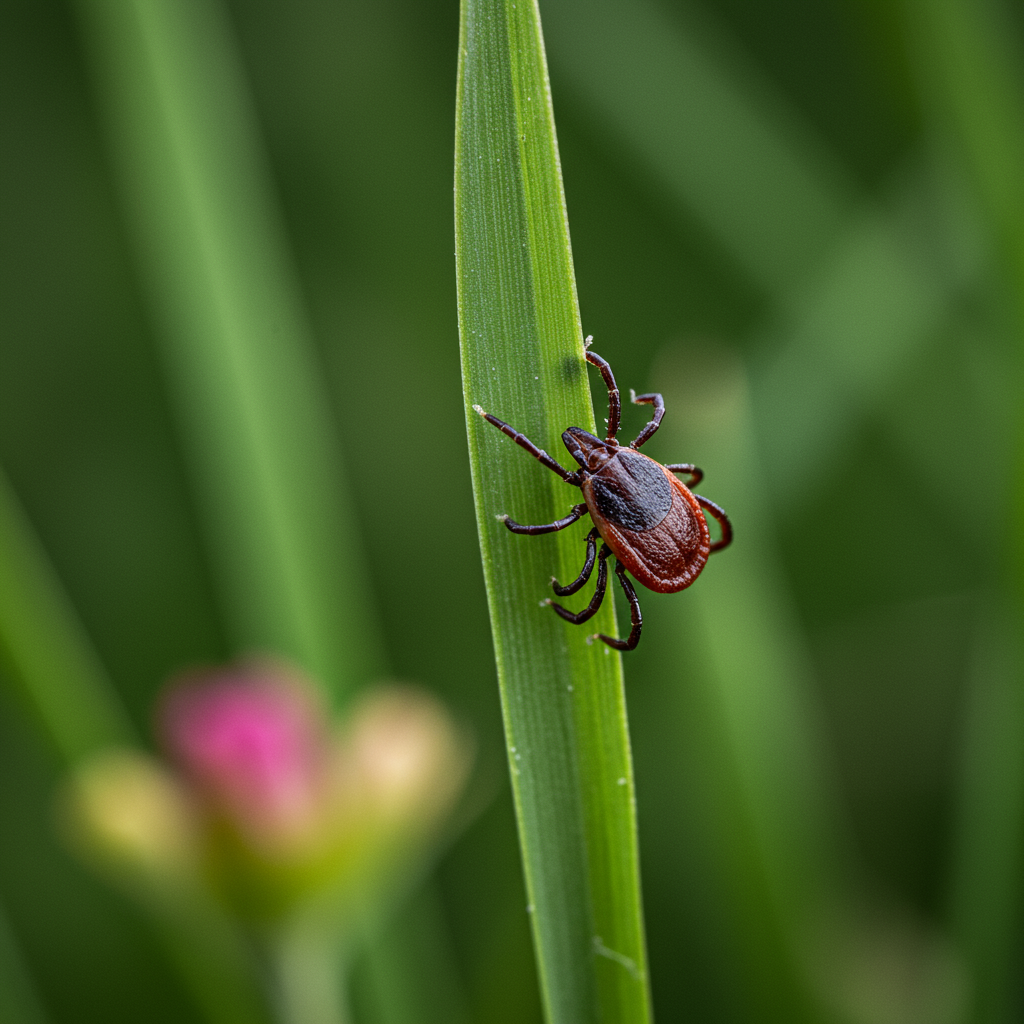Ticks are more than just a nuisance; they’re tiny carriers of potentially serious illnesses like Lyme disease, babesiosis, and Rocky Mountain spotted fever, posing risks to both humans and pets. With warming temperatures and changing climate patterns, tick season is starting earlier, lasting longer, and expanding its reach – including right into your backyard.
While you might expect to encounter ticks deep in the woods, your own property can become a surprising hotspot. Taking simple, proactive steps around your yard and ensuring your pets are protected are the best defenses against these persistent pests.
Here’s how to create a less inviting environment for ticks and keep your loved ones safe:
Fortify Your Yard Against Ticks
Ticks thrive in certain conditions, primarily areas that offer shade and moisture. By modifying your landscape, you can significantly reduce their presence.
Master Your Mower: Ticks love tall grass. Keep your lawn consistently cut to a height of about three inches.
Handle Clippings and Debris: Rake and remove leaves, leaf piles, and other yard debris. In areas with high tick populations, consider bagging grass clippings instead of mulching them, as this removes potential tick habitats. Blowing away debris from lawn edges is also helpful.
Create Protective Barriers: If your property borders wooded areas (a common source of ticks often carried by deer), consider installing a fence to deter wildlife. If fencing isn’t an option, build a three-foot-wide barrier between your lawn and wooded areas using dry materials like wood chips or gravel. This dry, hot perimeter is unappealing to ticks, making it harder for them to cross into your main yard. Avoid shredded mulch here, as it can retain moisture.
Trim Vegetation: Keep tall grasses, weeds, and low-hanging branches around your property’s edges neatly trimmed. This reduces shaded hiding spots where ticks wait to latch onto a host.
Instead of broad pesticide spraying, consider more targeted approaches. Products like tick tubes, which contain a small amount of insecticide picked up by mice (a common tick host), can help reduce the tick population over time when used consistently.
Protecting Your Furry Family Members
Pets that spend time outdoors are primary carriers of ticks into your home. Consistent protection is vital.
Prioritize Preventatives: Veterinarians strongly recommend using flea and tick prevention products year-round. These come in various forms, including chewable tablets, topical spot-ons, and collars.
Oral Medications: Often kill ticks and fleas after they bite. Some offer protection against a wide range of parasites including heartworm and intestinal worms. They can be a good option for pets with skin sensitivities or those who swim/bathe frequently. Requires a vet prescription.
Topical Treatments: Applied to the skin, these can sometimes act as repellents and kill ticks/fleas before they bite. Available by prescription or over-the-counter, but effectiveness can be reduced by bathing. Note that some topical products safe for dogs are highly toxic to cats, so be mindful of multi-pet households.
Collars: Certain collars offer long-lasting protection by releasing active ingredients over time. Ensure you use authentic products and consult your vet regarding safety.
Check Pets Regularly: After your pet has been outdoors, especially in grassy or wooded areas, perform a thorough tick check. Pay close attention to areas like the ears (inside and out), around the eyelids, under collars, under front legs, between back legs, and between their toes.
Clean Pet Areas: Regularly wash pet bedding and vacuum areas where your pet spends a lot of time. Vacuuming can significantly reduce flea eggs and larvae, and while less effective on ticks, it helps remove any that haven’t attached.
Consult your veterinarian to choose the safest and most effective preventative product tailored to your pet’s age, weight, health, lifestyle, and the prevalence of ticks in your area.
Protecting Yourself and Your Family
Just like pets, humans need protection and diligent checking after spending time in tick-prone areas.
Dress Defensively: When in wooded or tall grassy areas, wear long pants tucked into socks, long-sleeved shirts, and a hat to minimize exposed skin.
Use Repellents: Apply an EPA-approved insect repellent containing at least 20% picaridin or 25% DEET on exposed skin. You can also treat clothing and gear with permethrin (ensure it’s dry before contact, especially if you have cats, as it’s toxic when wet). Permethrin treatment can last through several washings.
Perform Thorough Checks: After coming indoors, do a full-body tick check. Ticks can be as small as a poppy seed, so look closely in areas like your hair and scalp, behind the ears, in the armpits, inside the belly button, around the waist, between the legs, and behind the knees.
Shower Post-Outdoors: Showering within a few hours of being outside in tick habitats can help wash away any ticks that haven’t yet attached.
If you find an attached tick:
- Remain calm. Ticks usually need hours to attach and often 24+ hours to transmit most diseases, though some viruses can be faster.
- Use fine-tipped tweezers to grasp the tick as close to the skin as possible.
- Pull straight upward with steady, even pressure. Don’t twist or jerk.
- Clean the bite area and your hands with rubbing alcohol or soap and water.
- If the mouthparts break off and remain in the skin, try to remove them with tweezers if possible, but often leaving them alone to avoid further skin irritation is best, as the body usually expels them naturally.
- Consider saving the tick in a sealed bag with a damp cotton ball or blade of grass. Identifying the tick species and potentially testing it later might provide valuable information if you develop symptoms, though tick testing is a debated topic among experts.
By implementing these simple strategies for your yard, pets, and yourself, you can significantly reduce your risk of tick encounters and enjoy the outdoors with greater peace of mind.




